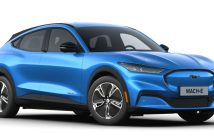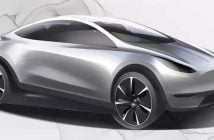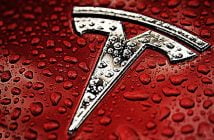+++ BMW has taken a different approach to electrifying its range than many of its rivals: it builds piston- and battery-powered cars on the same basic architecture and often on the same assembly line. Company boss Oliver Zipse explained the thinking behind this unusual strategy. Speaking at an economic forum in Frankfurt, Germany, the CEO noted that “we don’t want to write off the combustion engine”. BMW notably hasn’t announced when it will stop making gasoline- and diesel-burning cars, and that’s largely because it realistically points out many of its customers don’t want an electric car. Zipse has previously warned policymakers against enforcing bans that would coerce drivers into EVs. While sales of the brand’s electric models have increased, sales of piston-powered and hybrid cars dropped “only slightly”. The “EVs up to ICE down” ratio isn’t proportional, so 1 electric car sold doesn’t necessarily replace 1 car with an internal combustion engine. Zipse told the forum that many customers would simply keep their gasoline- or diesel-powered car for longer if the entire industry went electric-only. He added that e-fuels should play a role in this debate, too, especially considering there are over 1.2 billion piston-powered cars in the world. It’s illogical to assume that these vehicles will disappear from the road overnight. Ultimately, combustion-powered cars outsell EVs by a wide margin. It’s wrong to “badmouth products that are still being offered”, Zipse said. As a side note, BMW doesn’t believe the future is electric; not exactly. It’s also making large investments in hydrogen technology, both on its own (it has dabbled in the technology for nearly 20 years) and through a partnership with Toyota. Earlier in 2023, it unveiled an experimental iX5 that’s powered by a hydrogen-electric system. It offers almost 500 km of range, and refueling the tanks takes a few minutes. +++
+++ The angular, polarizing design of the CYBERTRUCK will help boost the Tesla brand, the electric vehicle maker’s chief designer said on Thursday, adding that the pickup was no experiment. “Love it or hate it, it’s a conversation starter, and it gets people talking about the brand”, Tesla chief designer Franz von Holzhausen said at the Petersen Automotive Museum in Los Angeles, which is adding Cybertruck models to a Tesla exhibit. The long-delayed Cybertruck starts at a price of $60.990, over 50% more than what CEO Elon Musk had touted in 2019, with a smaller range than originally promised. But it is drawing interest from people who have never owned a truck, with some potential owners queuing up for it at some Tesla showrooms, Von Holzhausen said. “Just because it looks different doesn’t mean that it can’t be potentially a high volume vehicle”, he added, saying the pick-up measures up to the performance of traditional rivals. “There seems to be this air of doubt”. “We’re bringing people into the market that never would have owned a truck before”, Von Holzhausen said. “And so I don’t think it’s an experiment”. The stainless-steel clad truck is all angles, in part because a traditional press can’t bend the steel into curves. The Lamborghini Countach, also an aggressively angular car, had also inspired the design, as had Lockheed’s F-117 Stealth Fighter jet, Von Holzhausen said. “It looks like it shouldn’t do what it does, yet, intelligent engineers figured it out”, he said of the F-117.
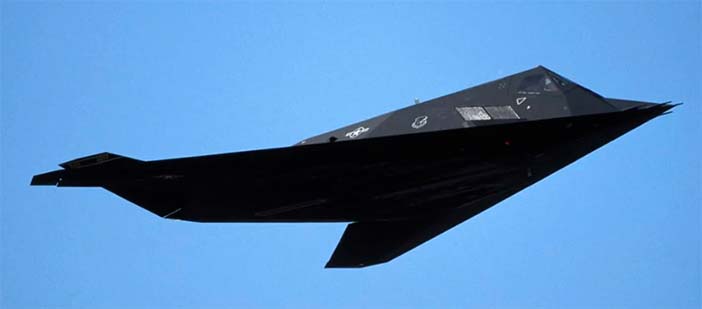
The Tesla design studio was also inspired by the car-turned-submarine in the 1977 James Bond movie “The Spy Who Loved Me”, which Musk bought. The Cybertruck’s launch has not been without glitches. In 2019, Von Holzhausen threw a metal ball at the truck during at its launch event, shattering two of its fortified glass windows. At another an event last month where the first trucks were delivered, he lobbed a baseball at the windows without any damage. A recent viral video also showed the Cybertruck carrying a Christmas-tree being pulled up a slope it was unable to climb by a gasoline-powered car. Von Holzhausen, however, defended the car, saying his kids love being picked up from school in the Cybertruck, and he has been mistaken for Musk by people when driving it. +++
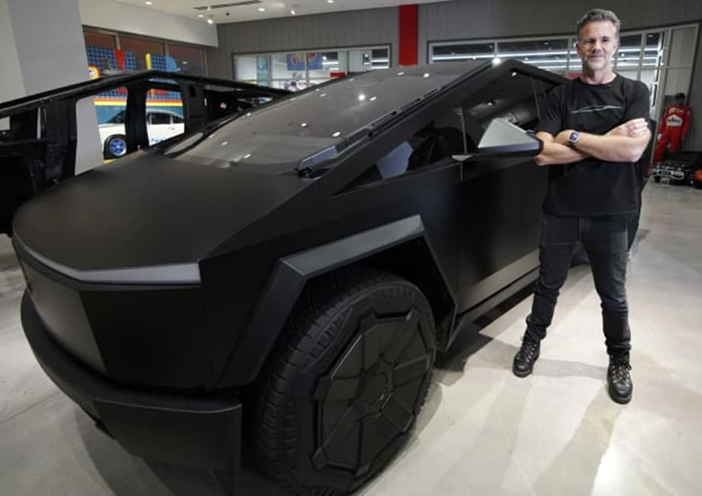
+++ As sales of battery-powered cars cool amid stubbornly high prices, many FORD dealers in the United States aren’t willing to take the leap and invest in selling them. Just over half of Ford’s nearly 3.000 dealerships in the U.S. have opted out of the investments necessary to sell electric vehicles like the F-150 Lightning and Mustang Mach-E. Instead, some dealers will stick to traditional combustion engines and hybrids, which are soaring in popularity as Americans flirt with lowering their gas costs without taking the full leap. “EV adoption rates vary across the country”, a Ford spokesperson told. “As dealers have completed their own due diligence in their local markets, dealer enrollments for 2024 entry have stabilized at just over 50% of the network (around 1.550 dealers). This enrollment level places 86% of the population within 20 miles of a Ford dealership capable of selling and servicing a Ford EV”. Part of dealers’ trepidation could be in response to the massive investments the automaker has required of its dealers to sell electric cars, including DC fast-chargers allowing each sales lot to double as a charging location for owners, and other training for staff. The certification programs can cost upwards of $1 million and landed Ford in several lawsuits. In one case, an Illinois board ruled in favor of a dealership group that claimed Ford’s program violated state laws. Ford plans to appeal the decision. Ford dealers were among the first to raise alarm bells on waning electric vehicle demand earlier this year when some stores started turning down Mustang Mach-E allocations. Later in the year, some Ford dealers told they were struggling to fill orders for the Lightning. Earlier in December, Ford scaled back production of the electric F-150 Lightning after temporarily cutting a shift of production in October. The company sold 16.000 electric trucks in the first 9 months of 2023, a tiny fraction of the roughly 570.000 F-series vehicles it has sold in the same period. The automaker has also postponed a $12 billion investment in EV manufacturing amid the sales slowdown. Ford’s relationship with dealers has taken a hit since the company started enforcing the new EV requirements. The company came in dead last in a recent survey of dealers’ trust in their franchises, with 46% of Ford dealers saying they had “no trust” in the franchise. +++
+++ HYUNDAI has made more progress toward electrification than many automakers, but it hasn’t yet cracked the affordable EV code. That’s changing in the near future with a new model that slots into its lineup beneath the Ioniq 5 and Ioniq 6. Hyundai’s EV exports have doubled in the past 2 years, with more than 218.000 units shipped in 2022. The company had a record-breaking November 2023, too, noting that electric vehicles have given it a significant boost in conquering global markets. Hyundai Europe vice-president of marketing Andreas-Christoph Hofmann hinted at a smaller, cheaper Ioniq 2 earlier this year, telling: “Everybody in the industry knows the target of this kind of vehicle is 20,000 euros”. Even so, the car is expected to have a reasonable range estimate and a new platform that helps cut manufacturing costs. If Hyundai can pull the affordable car off, it will be one of the first. Several automakers are pushing toward more affordable EVs, but so far, none have been able to slash prices as far as Tesla has with its more recent Model 3 price cuts. The Chevrolet Bolt (Opel Ampera-e) is a fantastic and affordable vehicle, but it’s being discontinued in favor of a different configuration in a couple of years. Advances in battery technology and manufacturing refinements have reduced materials and production costs, so costs are set to fall over the next few years. The cheaper cars can’t come soon enough. Price remains a hurdle for many buyers, as EVs are still significantly more expensive than comparable gas models. Hyundai’s current Ioniq EVs are far from the most expensive models on sale, but they’re not currently eligible for federal tax credits in the United States, leaving them more expensive than competitors from Tesla, Ford and others, though the new Kona Electric is surprisingly cheap. +++
+++ Something about the HYUNDAI N VISION 74 fuel-cell electric concept car inspires a special kind of collective yearning. There have been several speculative reports of the vehicle going into production, followed by several responses from Hyundai executives that, “No, it is not”. The hunger even exists inside the company, the automaker’s chief creative officer and head of the N brand management and motorsport saying in their own ways they’d like to see more than a concept. Hard to know whether this latest claim is more collective delusion, but there will be a production version arriving in the first half of 2026. “The possibility of mass production of the N Vision 74 has been raised several times, but this is the first time it has actually been confirmed”, according to a company insider. And it gets better. Enthusiasts still love imagining automakers trying to restore some kind of affordable, maybe-not-as-lightweight 1990s Japanese coupe to the market, e.g., the Honda Prelude and Toyota FT-Se concepts. The N Vision 74 won’t be that. The coupe’s expected to make 800 hp from its hydrogen fuel cell heart, an output triple jump beyond the 680 hp in the concept. No word on whether that means sticking to 2 motors on the rear axle and making each more powerful, or something else. Such output could get the sprint to 100 km/h down to 3 seconds. Range will shrink as a result, from an estimated 600 kilometers to an estimated 400 to 500 kilometers. Furthermore, Hyundai plans to build just 100 cars. Seventy of them will be sold to the general public (by ‘general’ I mean those who paid their way to the front of the lines). The rest will be campaigned in splashy race series’ in the U.S. and Europe. The tiny production run makes sense considering the power source. SNE Research found the Hyundai Nexo FCEV to be the best-selling hydrogen-powered vehicle in the world last year, its 10.700 units sold globally marking a 57% share of the 18.457 total global FCEV sales. Hyundai Group’s arguably doing more work than the Japanese to promote hydrogen outside the home country, though, not only selling the Nexo FCEV here, but also running a fleet of its hydrogen-powered Xcient FCEV Class 8 trucks at the port of Oakland, California, and building hydrogen facilities at its coming Georgia plant with plans to run FCEV supply trucks from the plant to the port. Hyundai chairman Chung Eui-sun supposedly wants the N Vision 74 on the road and the track to showcase Hyundai’s capabilities and “to solidify its leadership in electrification technology”. The automaker is “discussing plans with partners” at the moment, I’m told. Hyundai’s taken what could be considered steps in that direction, applying to trademark the name “Hyundai N74” in Europe and in Australia. It’s also applied for patents on a hydrogen fuel cell setup that looks like the setup in the concept, although drawn in patent paperwork inside a Kia Stinger. Considering the testing and development a production N74 would need to satisfy Hyundai’s aims and those of qualified race teams, this one can’t stay secret for long. +++
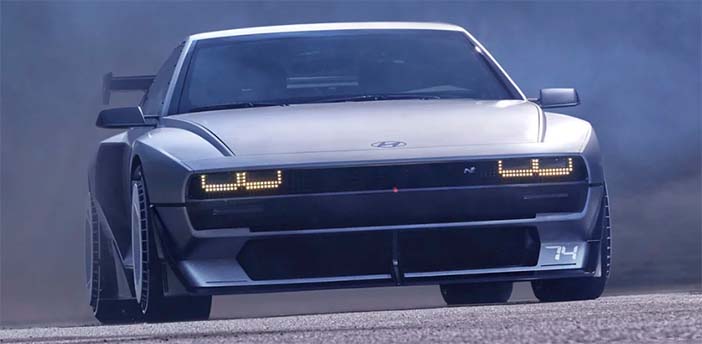
+++ MERCEDES-BENZ will show the next evolution of its MBUX infotainment system and MB.OS software platform at the 2024 Consumer Electronics Show. There, visitors to Mercedes’ booth can meet the luxury automaker’s new AI-powered virtual assistant, which is promised to take the “driver-car relationship into new dimension with natural, human-like interaction”. We’re also told to expect “class-defining new features and collaborations” for in-car entertainment, dazzling with “an expressive new face” utilizing Unity’s game-engine graphics. No hint of what that looks like yet; a brief preview clip only shows generic animation of stylized 3-pointed stars. The dawn of in-car AI assistants grows brighter, though. At CES this year, BMW used its keynote to unveil its Digital Emotional Experience, otherwise known as an AI-powered “companion” named DEE that also happened to be the anthropomorphic namesake of the i Vision Dee concept car. In March came stories of General Motors looking into using OpenAI’s ChatGPT for a virtual assistant, and in August, stories that GM was using Google tools like Dialogflow to handle some OnStar requests. Volvo started with ChatGPT outside the car, working with Meta on a WhatsApp integration to help shoppers learn about the new EX30; this type of effort comes two years after Toyota put an AI assistant named Joya into the Sienna minivan to help owners learn about their new rides. And today I learned that TomTom and Microsoft are teaming up on AI. Some observers consider AI-powered assistants the ideal tech for cars, the hope being the AI can answer questions and execute commands well enough to keep a driver focused on driving, not screens. As Mercedes said, “Soon, participants who ask the Voice Assistant for details about their destination, to suggest a new dinner recipe, or to answer a complex question, will receive a more comprehensive answer, while keeping their hands on the wheel and eyes on the road”. The new girl Friday from Stuttgart takes a virtual bow on January 9 in Las Vegas from the Concept CLA battery-electric sedan. A camouflaged example of the electric G-Class prototype will also be in attendance. +++
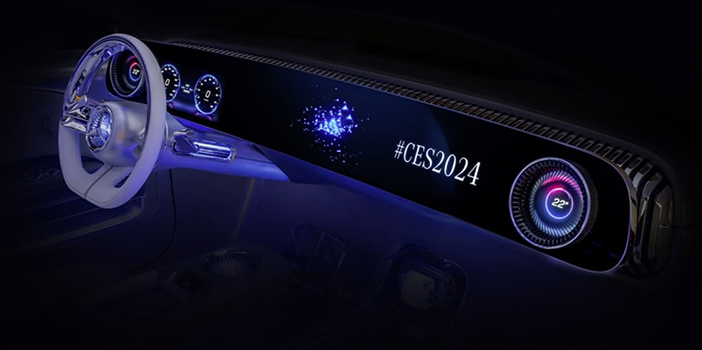
+++ SCOUT MOTORS went on a trademark application spree this year and probably isn’t finished. Among the 41 petitions submitted, more than 2 dozen are devoted to potential names for the coming lineup of battery-electric off-roaders. First, as anyone would expect, Scout covered bases by asking for the rights to historical names. These 17 names with some sort of vintage connection are: Aristocrat, Rallye, Scout 80, Scout 800, Scout II, Sno-Star, Sportstar, SR-2, SSII, Spirit, Super Scout, Terra, Terrastar, Trailstar, Travelstar, Travelstar XL and Traveltop. The most important wordmarks start with Scout 80, the first model International Harvester launched for the Scout lineup in 1960. Following that came the Scout 800, hitting the market in 1966, followed by evolutions known as 800A and 800B. Then came the Scout II in 1971. As a brief intro to what all this might mean for future Scouts, the Scout 800 introduced a V8 engine to the range. The Aristocrat package that could be had on the 800A came with two-tone paint, a roof rack, and rally wheels. The Rallye Package offered on the Scout II and Traveler added fancy rally wheels plus stripes and “rallye” badging on the fenders. The 800B Sno-Star Edition came with a snow plow from the factory; one of the perks of being owned by a truck maker. An Indiana outfit called Custom Vehicles Incorporated (CVI) specialized in creating packages for Scouts; the Scout Sportstar and its lurid plaid interior was one of them. CVI also created the Terra, Trailstar and Travelstar. A limited-edition version of the SR-2 built on the 800A came in either Flame Red or gold, identified by the double hood stripes, double stripes just below the shoulder line, and “SR-2” in a stripe along the lower bodysides. International Harvester released a Spirit of ’76 special edition to celebrate America’s bicentennial, which could be the connection to the Spirit trademark. The Super Scout, also known as the SSII, was a stripped-down version with fabric roof and doors inspired by the off-road racing Scouts. The Traveltop was a short-wheelbase, hardtop version of the Scout Traveler, which was ironic considering the Traveler added 18 inches of wheelbase to the Scout to provide more room and a more luxurious experience. Then there are 12 more potential names that are new and almost all decidedly farm-like, potentially ominous, somewhat Transformer-y, and we think much better fits for an F-150-sized pickup than an SUV: Baler, Carolina, Cultivator, Forma, Grade, Harrow, Hauler, Reaper, Scythe, Swather, Tellus and Thresher. Carolina is the odd one out, a sweet and wistful name for a rural rig. And if Scout applies the Reaper name to anything other than a lowered, 900 hp street truck that only comes in quintuple black, it’ll be a shame. +++
+++ Sweden’s Transport Agency said on Friday it is investigating suspension failures in TESLA cars along with a similar probe by neighboring Norway’s traffic safety regulator. “We can confirm that investigative work is also underway with us”, the Swedish agency said in an emailed statement. The Finnish transport and communications agency told Reuters it had not been contacted about faulty suspension failures. The Norwegian Public Roads Administration (NPRA) on Thursday said it started questioning Tesla in September 2022 and asked the automaker to assess consumer complaints about lower rear control arms breaking on its Model S and X vehicles. The Norwegian agency could recommend that Tesla recall the vehicles to replace the parts if it determines they pose a “serious risk”. However, it could also close the review if there is no safety issue or decide to extend the investigation. Asked about the Norwegian probe, the Swedish agency said it too had received “a number of notifications about cars from the Tesla brand that have suffered from similar problems”. A spokesperson for the Swedish regulator declined to comment further on details of the investigation as it was still ongoing. News of the Swedish and Norwegian inquiries follows an investigation that exposed how Tesla has blamed drivers for frequent failures of suspension and steering parts that it has long known were defective. Facing soaring warranty costs, Tesla sought to slash spending on repairs in part by attributing the failures to “driver abuse,” according to the report, which was based on thousands of Tesla documents and interviews with former employees, including service managers and technicians in Norway. +++
+++ TOMTOM just announced a “fully integrated, AI-powered conversational automotive assistant” which should start popping up in dashboard infotainment platforms in the near-ish future. The company has issued some bold claims for the AI, saying it’ll offer “more sophisticated voice interaction” and allow users to converse naturally to navigate, find stops along a route, control onboard systems, open windows and just about anything else you find yourself doing while driving. The company, best known for GPS platforms, partnered up with Microsoft to develop this AI assistant. The technology leverages OpenAI’s large language models, in addition to Microsoft products like Azure Cosmos DB and Azure Cognitive Services. Cosmos DB is a multi-model database and Cognitive Services is a set of APIs for use in AI applications, so this should be a capable assistant that draws from the latest advancements. TomTom promises that the voice assistant will integrate into a variety of interfaces offered by major automobile manufacturers, stating that the auto company will retain ownership of its branding. So this could start showing up in cars from a wide variety of makers. The company hasn’t announced any definitive partnerships with known vehicle manufacturers, but the technology will be integrated into TomTom’s proprietary Digital Cockpit, an open and modular in-vehicle infotainment platform. This isn’t the first time a company has tried to stuff an LLM inside of a car. Back in June, Mercedes announced a three-month beta program that incorporated ChatGPT models into select vehicles. This tool also leveraged Microsoft’s Azure OpenAI service. TomTom is showing off the AI at CES in January, so we’ll know more about how it actually works at that point. +++

